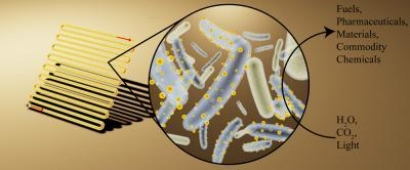
According to a report on UC Berkeley’s website, Chemistry Professor Peidong Yang and Kelsey Sakimoto, a former graduate student now at Harvard University, fed the bacteria chemicals allowing them to construct their own solar collectors, which were able to capture about 80% of sunlight’s energy to make acetic acid. This is about four times more efficient than natural photosynthesis using chlorophyll, which captures sunlight to convert carbon dioxide and water into starch.
Acetic acid is a versatile chemical that can be readily upgraded to a number of fuels, polymers, pharmaceuticals and commodity chemicals through complementary, genetically engineered bacteria.
“Rather than rely on inefficient chlorophyll to harvest sunlight, I’ve taught bacteria how to grow and cover their bodies with tiny semiconductor nanocrystals,” Sakimoto said. “These nanocrystals are much more efficient than chlorophyll and can be grown at a fraction of the cost of manufactured solar panels.”
The research was presented at the national meeting of the American Chemical Society in Washington, DC.
For Information: UC Berkeley
Illustration: Artist’s rendering of bioreactor (left) loaded with bacteria decorated with cadmium sulfide, light-absorbing nanocrystals (middle) to convert light, water and carbon dioxide into useful chemicals (right). Credit: Kelsey K. Sakimoto

